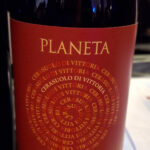2020 Wine Vintage Report
🏆 Was 2020 a Good Wine Vintage Year?
2020 was a challenging year, but still a good year for high-quality wine. Extreme weather, wildfires, and–of course–COVID-19 pandemic-related disruptions made 2020 a pretty singular year.
In the northern hemisphere, Europe had a strong vintage overall. France, Italy, and Spain all produced balanced and vibrant wines, despite some regions reporting smaller yields. In the US, while Washington and Oregon did alright, California struggled with wildfires and extreme weather.
In the southern hemisphere, South America also overcame harsh weather, with both Argentina and Chile delivering great wine. Uruguay pulled through too. Australia suffered significant fire losses, but what survived, thrived. New Zealand and South Africa both had very good years.
It was a variable year for both Old World and New World wines, with everyone just trying to figure out how to operate in the new normal. The southern hemisphere’s earlier harvest may have helped it avoid the same level of COVID complications… for now.
Let’s dig in to 2020.
📉 Global Wine Trends in 2020
🌍🍇 Global wine production in 2020 was 260 million hectoliters, down 1.1% from 2019.
🌎🍷 Global wine consumption in 2020 was 231 million hectoliters, down 2.1% from 2019.
🌐 The 2020 Vintage by Country
📍 The Big Four
France, Italy, Spain, and the US consistently dominate the modern global wine scene.
 FRANCE produced 46.7 million hectoliters of wine in 2020. COVID made the year an interesting challenge, impacting everything from harvest to tastings to sales. A mild winter led to a hot summer, with some vineyards experiencing their earliest picking dates in 650 years.
FRANCE produced 46.7 million hectoliters of wine in 2020. COVID made the year an interesting challenge, impacting everything from harvest to tastings to sales. A mild winter led to a hot summer, with some vineyards experiencing their earliest picking dates in 650 years.
- BORDEAUX had a fine year, producing good-quality wines.
- SAUTERNES likely did okay, though my details are sparse.
- BURGUNDY had a good year, with wines that may age well.
- BEAUJOLAIS also had a good year, with potential for aging.
- CHAMPAGNE suffered somewhat in the warm growing season, impacting yields and quality.
- ALSACE struggled with the warm conditions, facing challenges throughout the year.
- THE LOIRE VALLEY did well, producing solid and consistent wines.
- THE RHÔNE VALLEY had a successful year, with favorable results.
 ITALY had generally favorable wine conditions in spite of being hit so hard by COVID. The weather wasn’t as bad as recent years, with well-timed rainfalls and a significant day-to-night temperature shift that enhanced aromatic development. While some yields were smaller than average, most grapes ripened with a good balance. And Italy’s yield overall was actually up slightly from last year, reaching 49.1 million hectoliters. Vineyards reported promising results for grapes like Nebbiolo, Sangiovese, and Vermentino. 2020 will likely give you some excellent quality Italian wines.
ITALY had generally favorable wine conditions in spite of being hit so hard by COVID. The weather wasn’t as bad as recent years, with well-timed rainfalls and a significant day-to-night temperature shift that enhanced aromatic development. While some yields were smaller than average, most grapes ripened with a good balance. And Italy’s yield overall was actually up slightly from last year, reaching 49.1 million hectoliters. Vineyards reported promising results for grapes like Nebbiolo, Sangiovese, and Vermentino. 2020 will likely give you some excellent quality Italian wines.
 SPAIN produced 40.9 million hectoliters of wine in 2020. It was a good year, especially for the coastal regions. However, wet and warm conditions also were good for mildew, which had to be carefully avoided. A drier summer let vintners have a more relaxed harvest season than originally expected. Rioja had an especially challenging year, perhaps not its best, but other regions showed more promising results.
SPAIN produced 40.9 million hectoliters of wine in 2020. It was a good year, especially for the coastal regions. However, wet and warm conditions also were good for mildew, which had to be carefully avoided. A drier summer let vintners have a more relaxed harvest season than originally expected. Rioja had an especially challenging year, perhaps not its best, but other regions showed more promising results.
 THE UNITED STATES produced 22.8 million hectoliters of wine in 2020, a very low year, mostly brought on by troubles in California.
THE UNITED STATES produced 22.8 million hectoliters of wine in 2020, a very low year, mostly brought on by troubles in California.
 CALIFORNIA had a very challenging year, marked by extreme weather and terrible wildfires. An unusually warm winter led into a dry spring and summer, with heatwaves and drought stressing vines and reducing overall yields. Lightning strikes in August and September ignited massive wildfires, including the Glass Fire, which led to significant damage to vineyards, wineries, and equipment. Napa and Sonoma were hit especially hard. Napa whites benefited from an early harvest and show promise, while many reds face issues with smoke taint. Despite the challenges, some winemakers managed to craft wines with intense concentration due to the dry growing season.
CALIFORNIA had a very challenging year, marked by extreme weather and terrible wildfires. An unusually warm winter led into a dry spring and summer, with heatwaves and drought stressing vines and reducing overall yields. Lightning strikes in August and September ignited massive wildfires, including the Glass Fire, which led to significant damage to vineyards, wineries, and equipment. Napa and Sonoma were hit especially hard. Napa whites benefited from an early harvest and show promise, while many reds face issues with smoke taint. Despite the challenges, some winemakers managed to craft wines with intense concentration due to the dry growing season. WASHINGTON STATE had a warm year with a significantly smaller crop yield than the last few years. Harvest season turned especially hot, and then it turned smoky, as air pollution from nearby wildfires poured in. Most vineyards rushed to pick ahead of time, so there was little actual damage reported. It should be a great year for high-quality dark reds.
WASHINGTON STATE had a warm year with a significantly smaller crop yield than the last few years. Harvest season turned especially hot, and then it turned smoky, as air pollution from nearby wildfires poured in. Most vineyards rushed to pick ahead of time, so there was little actual damage reported. It should be a great year for high-quality dark reds. OREGON had a dry year, with challenges from moderate heat stress and wildfire/smoke danger. Despite lower yields, small berries and clusters resulted in concentrated flavors and vibrant acidity. A good year especially for white wines and early-harvest varieties and vineyards.
OREGON had a dry year, with challenges from moderate heat stress and wildfire/smoke danger. Despite lower yields, small berries and clusters resulted in concentrated flavors and vibrant acidity. A good year especially for white wines and early-harvest varieties and vineyards. NEW YORK STATE had a mild winter and a dry growing season, which led to great ripeness and balanced acidity in the Finger Lakes region, a good year overall.
NEW YORK STATE had a mild winter and a dry growing season, which led to great ripeness and balanced acidity in the Finger Lakes region, a good year overall.
📍 Europe
The heart of the wine world, Europe boasts centuries of expertise and massive variety.
 PORTUGAL produced 6.4 million hectoliters of wine in 2020. It was a warm year with an early harvest, and winemakers felt the need to start adapting to climate change more decisively. The Douro Valley faced especially high temperatures, and Vinho Verde reported excellent quality and balance. Drought conditions concentrated grapes, producing wines with intense aromatics and great flavors. High-altitude vineyards handled the heat stress best. For Port, COVID-19 restrictions complicated the harvest in a region so reliant on manual labor and traditional foot-treading. Still, many houses declared vintage Ports, expected to be deeply colored, aromatic, and great candidates for aging.
PORTUGAL produced 6.4 million hectoliters of wine in 2020. It was a warm year with an early harvest, and winemakers felt the need to start adapting to climate change more decisively. The Douro Valley faced especially high temperatures, and Vinho Verde reported excellent quality and balance. Drought conditions concentrated grapes, producing wines with intense aromatics and great flavors. High-altitude vineyards handled the heat stress best. For Port, COVID-19 restrictions complicated the harvest in a region so reliant on manual labor and traditional foot-treading. Still, many houses declared vintage Ports, expected to be deeply colored, aromatic, and great candidates for aging.
 GERMANY produced 8.4 million hectoliters of wine in 2020. It was a hot, sunny growing season, leading to ripe, concentrated fruit and excellent potential across most regions. A warm spring allowed for early budburst, but May frost reduced some yields in regions like Franken and Württemberg. Summer was hot and dry, pushing grapes to ripen simultaneously, which led to a fast-paced autumn as growers raced to harvest at optimal times. Despite the challenges for winemakers, the grapes provided fresh, dry wine, with balanced acidity and fruit-forward profiles. Reds especially benefited from the heat, while whites like Kabinett and Spätlesen maintained elegant minerality. Dry conditions did, however, limit botrytized wines. But it should be an excellent year for the rest.
GERMANY produced 8.4 million hectoliters of wine in 2020. It was a hot, sunny growing season, leading to ripe, concentrated fruit and excellent potential across most regions. A warm spring allowed for early budburst, but May frost reduced some yields in regions like Franken and Württemberg. Summer was hot and dry, pushing grapes to ripen simultaneously, which led to a fast-paced autumn as growers raced to harvest at optimal times. Despite the challenges for winemakers, the grapes provided fresh, dry wine, with balanced acidity and fruit-forward profiles. Reds especially benefited from the heat, while whites like Kabinett and Spätlesen maintained elegant minerality. Dry conditions did, however, limit botrytized wines. But it should be an excellent year for the rest.
 AUSTRIA produced 2.4 million hectoliters of wine in 2020. It was a mixed bag of a year, with varying weather across regions. A dry winter led into a cool spring, delaying flowering. Summer was back and forth between sun and rain, and even hailstorms in areas like Wachau. September brought steadier warm days and cool nights, despite some heavy local rainfall. It was a decent enough year across the board for both whites and reds, including those that Austria is known for like Grüner Veltliner, Riesling, Blaufränkisch, and Zweigelt. They should be elegant, balanced, fresh, and lower in alcohol than usual. Despite the challenges, some good wines were still made this year.
AUSTRIA produced 2.4 million hectoliters of wine in 2020. It was a mixed bag of a year, with varying weather across regions. A dry winter led into a cool spring, delaying flowering. Summer was back and forth between sun and rain, and even hailstorms in areas like Wachau. September brought steadier warm days and cool nights, despite some heavy local rainfall. It was a decent enough year across the board for both whites and reds, including those that Austria is known for like Grüner Veltliner, Riesling, Blaufränkisch, and Zweigelt. They should be elegant, balanced, fresh, and lower in alcohol than usual. Despite the challenges, some good wines were still made this year.
 Switzerland produced 0.8 million hectoliters of wine in 2020.
Switzerland produced 0.8 million hectoliters of wine in 2020.
 Hungary produced 2.6 million hectoliters of wine in 2020.
Hungary produced 2.6 million hectoliters of wine in 2020.
 Greece produced 2.2 million hectoliters of wine in 2020.
Greece produced 2.2 million hectoliters of wine in 2020.
 Czechia produced 0.6 million hectoliters of wine in 2020.
Czechia produced 0.6 million hectoliters of wine in 2020.
 Slovakia produced 0.4 million hectoliters of wine in 2020.
Slovakia produced 0.4 million hectoliters of wine in 2020.
 Slovenia produced 0.7 million hectoliters of wine in 2020.
Slovenia produced 0.7 million hectoliters of wine in 2020.
 Croatia produced 0.7 million hectoliters of wine in 2020.
Croatia produced 0.7 million hectoliters of wine in 2020.
 Georgia produced 2.1 million hectoliters of wine in 2020.
Georgia produced 2.1 million hectoliters of wine in 2020.
 Romania produced 3.8 million hectoliters of wine in 2020.
Romania produced 3.8 million hectoliters of wine in 2020.
 Moldova produced 0.9 million hectoliters of wine in 2020.
Moldova produced 0.9 million hectoliters of wine in 2020.
 Russia produced 4.4 million hectoliters of wine in 2020.
Russia produced 4.4 million hectoliters of wine in 2020.
 Bulgaria produced 0.9 million hectoliters of wine in 2020.
Bulgaria produced 0.9 million hectoliters of wine in 2020.
 Luxembourg produced 0.1 million hectoliters of wine in 2020.
Luxembourg produced 0.1 million hectoliters of wine in 2020.
 Cyprus produced 0.1 million hectoliters of wine in 2020.
Cyprus produced 0.1 million hectoliters of wine in 2020.
 THE UNITED KINGDOM produced about 65,250 hectoliters of wine in 2020. Yields were impacted by spring frosts and small bunch weights from a dry summer. But early budburst and a warm autumn allowed for excellent ripeness, especially in Chardonnay and Pinot Noir. A dry harvest season led to expressive fruit notes in both still and sparkling wines, and it should be an excellent year for quality overall.
THE UNITED KINGDOM produced about 65,250 hectoliters of wine in 2020. Yields were impacted by spring frosts and small bunch weights from a dry summer. But early budburst and a warm autumn allowed for excellent ripeness, especially in Chardonnay and Pinot Noir. A dry harvest season led to expressive fruit notes in both still and sparkling wines, and it should be an excellent year for quality overall.
📍 North & South America
The Americas continue to expand their influence, from the rugged Andes to Canada’s icy valleys.
 ARGENTINA produced 10.8 million hectoliters of wine in 2020. It was a hot and dry growing season that came with plenty of logistical issues due to the COVID-19 pandemic, but the wines from this year are of exceptional quality. A dry winter and a summer with major heat spikes quickened ripening, leading to one of the earliest harvests in decades. The drought stressed the grapes just right, resulting in reduced yields but highly-concentrated fruit that would go on to produce vibrant wine, especially in Mendoza and Patagonia. As it happens, the early harvest that was brought on by the weather helped most of the grapes get picked before COVID hit. This should be a terrific year for Argentinian wines across the board.
ARGENTINA produced 10.8 million hectoliters of wine in 2020. It was a hot and dry growing season that came with plenty of logistical issues due to the COVID-19 pandemic, but the wines from this year are of exceptional quality. A dry winter and a summer with major heat spikes quickened ripening, leading to one of the earliest harvests in decades. The drought stressed the grapes just right, resulting in reduced yields but highly-concentrated fruit that would go on to produce vibrant wine, especially in Mendoza and Patagonia. As it happens, the early harvest that was brought on by the weather helped most of the grapes get picked before COVID hit. This should be a terrific year for Argentinian wines across the board.
 CHILE produced 10.3 million hectoliters of wine in 2020. Extreme weather conditions and COVID-19 complicated matters, but in the end, the country delivered some promising wines. A dry and mild winter was followed by spring frosts in regions like Casablanca and Curicó, reducing yields. The summer was very hot, with drought stressing the vines, quickening ripening and concentrating the fruit, and leading to an early harvest. Coastal regions benefited from cooler climates, producing more mineral-focused wines and better whites. Reds were still great across the country, and especially fruit-forward from inland regions. This should be a good year for Chilean wines.
CHILE produced 10.3 million hectoliters of wine in 2020. Extreme weather conditions and COVID-19 complicated matters, but in the end, the country delivered some promising wines. A dry and mild winter was followed by spring frosts in regions like Casablanca and Curicó, reducing yields. The summer was very hot, with drought stressing the vines, quickening ripening and concentrating the fruit, and leading to an early harvest. Coastal regions benefited from cooler climates, producing more mineral-focused wines and better whites. Reds were still great across the country, and especially fruit-forward from inland regions. This should be a good year for Chilean wines.
 Brazil produced 2.3 million hectoliters of wine in 2020.
Brazil produced 2.3 million hectoliters of wine in 2020.
 URUGUAY produced 0.7 million hectoliters of wine in 2020. It was a fantastic year, drawing comparisons to the standout 2018 vintage, but with even more balance across both reds and whites. A dry, warm summer and perfect harvest conditions allowed for fresh, vibrant whites, and concentrated, acidic reds, especially Tannat (the national grape). Quite a standout year for Uruguay.
URUGUAY produced 0.7 million hectoliters of wine in 2020. It was a fantastic year, drawing comparisons to the standout 2018 vintage, but with even more balance across both reds and whites. A dry, warm summer and perfect harvest conditions allowed for fresh, vibrant whites, and concentrated, acidic reds, especially Tannat (the national grape). Quite a standout year for Uruguay.
📍 Oceania
Oceania’s unique climates and soils produce globally distinctive wines.
 AUSTRALIA produced 10.9 million hectoliters of wine in 2020. The country was devastated by severe bushfires, which left significant scar on the country overall, not to mention its wine industry. While some regions also faced hail, frost, and flooding, the fires defined this season, with smoke taint a major concern for many vineyards as well. Remarkably, only ~3% of the country’s crop was actually lost, but high-end producers were disproportionately affected and some didn’t even release wines this year. The wines you can find from 2020, however, are likely very good to excellent.
AUSTRALIA produced 10.9 million hectoliters of wine in 2020. The country was devastated by severe bushfires, which left significant scar on the country overall, not to mention its wine industry. While some regions also faced hail, frost, and flooding, the fires defined this season, with smoke taint a major concern for many vineyards as well. Remarkably, only ~3% of the country’s crop was actually lost, but high-end producers were disproportionately affected and some didn’t even release wines this year. The wines you can find from 2020, however, are likely very good to excellent.
 NEW ZEALAND produced 3.3 million hectoliters of wine in 2020. It was a great year, marked by a warm and dry growing season, with only Central Otago experiencing cooler-than-usual conditions. Despite pandemic restrictions during the harvest, producers brought in clean, concentrated fruit. Marlborough delivered stellar Sauvignon Blanc and Pinot Noirs, and the rest of the country excelled in quality too.
NEW ZEALAND produced 3.3 million hectoliters of wine in 2020. It was a great year, marked by a warm and dry growing season, with only Central Otago experiencing cooler-than-usual conditions. Despite pandemic restrictions during the harvest, producers brought in clean, concentrated fruit. Marlborough delivered stellar Sauvignon Blanc and Pinot Noirs, and the rest of the country excelled in quality too.
📍 Africa & Asia
Emerging markets in Africa and Asia bring fresh perspectives to the industry.
 SOUTH AFRICA produced 10.4 million hectoliters of wine in 2020. It was a better wine year than 2019, despite pandemic-related challenges. A warm, steady growing season provided ideal conditions to concentrate the grapes, while vineyard winds minimized disease pressure. Late season rains gave welcome refreshment to the vines. Whites like Chenin Blanc and Chardonnay are promising, and reds are likely to be expressive and fruit-forward.
SOUTH AFRICA produced 10.4 million hectoliters of wine in 2020. It was a better wine year than 2019, despite pandemic-related challenges. A warm, steady growing season provided ideal conditions to concentrate the grapes, while vineyard winds minimized disease pressure. Late season rains gave welcome refreshment to the vines. Whites like Chenin Blanc and Chardonnay are promising, and reds are likely to be expressive and fruit-forward.
 China produced 6.6 million hectoliters of wine in 2020.
China produced 6.6 million hectoliters of wine in 2020.
Sources: OIV, Decanter, Wine-Searcher, Alliance Wine, Washington Wine, Oregon Wine, Finger Lakes Wine Alliance, Jancis Robinson (2), K&L Wines, Napa Vintners, South America Wine Guide, Austrian Wine, English Wine.
🍷 Wines from 2020 I’ve Tried
See all Vintages (Years) of Wine, or jump straight to: 2012, 2013, 2014, 2015, 2016, 2017, 2018, 2019, 2020, 2021, 2022, 2023, or 2024. See also: No Vintage.






